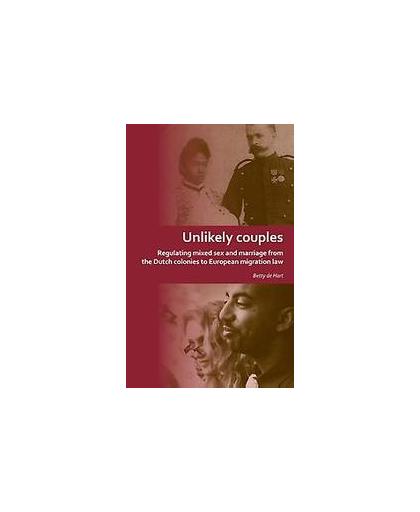

Unlikely couples. regulating mixed sex and marriage from the Dutch colonies to European migration law, Hart, Betty de, Paperback
Available at:
How has law been used in the past to try to prevent 'racially' and ethnically' mixed marriages? How is this still relevant for migration law today? These are the central questions addressed in this contribution by Betty de Hart, based on her inaugural speech of 13 June 2014 held at the University of Amsterdam. Interracial marriage prohibitions make us think in the first place of the United States and slavery. But the Netherlands has also had interracial marriage prohibitions, in the colonies of Surinam and the Dutch East Indies. Mixed marriages between Jews and Non-Jews were not only prohibited during the Second World War, but also in the period of the Dutch Republic, although with very different motives. Furthermore, other forms of legal regulation have been used to try to prevent mixed sex and marriages: spatiallegal segregation, regulating legal consequences, marriage counseling and migration law. De Hart discusses these forms of regulation of sex, relationships and marriages between groups that were considered 'racially' or 'ethnically' mixed. She provides historical examples, such as the measures against 'Negrocabarets' and against Dutch-Chinese marriages, both in the 1930s. The state tried to prevent mixed sex and marriages for various reasons: protection of the nation, economic interests, and the monogamous marriage model. De Hart argues that present-day migration law is still informed by notions of mixed relationships as 'unlikely couples'.
Unlikely couples
How has law been used in the past to try to prevent 'racially' and ethnically' mixed marriages? How is this still relevant for migration law today? These are the central questions addressed in this contribution by Betty de Hart, based on her inaugural speech of 13 June 2014 held at the University of Amsterdam. Interracial marriage prohibitions make us think in the first place of the United States and slavery. But the Netherlands has also had interracial marriage prohibitions, in the colonies of Surinam and the Dutch East Indies. Mixed marriages between Jews and Non-Jews were not only prohibited during the Second World War, but also in the period of the Dutch Republic, although with very different motives. Furthermore, other forms of legal regulation have been used to try to prevent mixed sex and marriages: spatiallegal segregation, regulating legal consequences, marriage counseling and migration law. De Hart discusses these forms of regulation of sex, relationships and marriages between groups that were considered 'racially' or 'ethnically' mixed. She provides historical examples, such as the measures against 'Negrocabarets' and against Dutch-Chinese marriages, both in the 1930s. The state tried to prevent mixed sex and marriages for various reasons: protection of the nation, economic interests, and the monogamous marriage model. De Hart argues that present-day migration law is still informed by notions of mixed relationships as 'unlikely couples'.
Beschrijving gevonden op BookSpot.nl
Unlikely couples
How has law been used in the past to try to prevent 'racially' and ethnically' mixed marriages? How is this still relevant for migration law today? These are the central questions addressed in this contribution by Betty de Hart, based on her inaugural speech of 13 June 2014 held at the University of Amsterdam.<br />Interracial marriage prohibitions make us think in the first place of the United States and slavery. But the Netherlands has also had interracial marriage prohibitions, in the colonies of Surinam and the Dutch East Indies. Mixed marriages between Jews and Non-Jews were not only prohibited during the Second World War, but also in the period of the Dutch Republic, although with very different motives. Furthermore, other forms of legal regulation have been used to try to prevent mixed sex and marriages: spatiallegal segregation, regulating legal consequences, marriage counseling and migration law.<br />De Hart discusses these forms of regulation of sex, relationships and marriages between groups that were considered 'racially' or 'ethnically' mixed. She provides historical examples, such as the measures against 'Negrocabarets' and against Dutch-Chinese marriages, both in the 1930s.<br />The state tried to prevent mixed sex and marriages for various reasons: protection of the nation, economic interests, and the monogamous marriage model. De Hart argues that present-day migration law is still informed by notions of mixed relationships as 'unlikely couples'.


